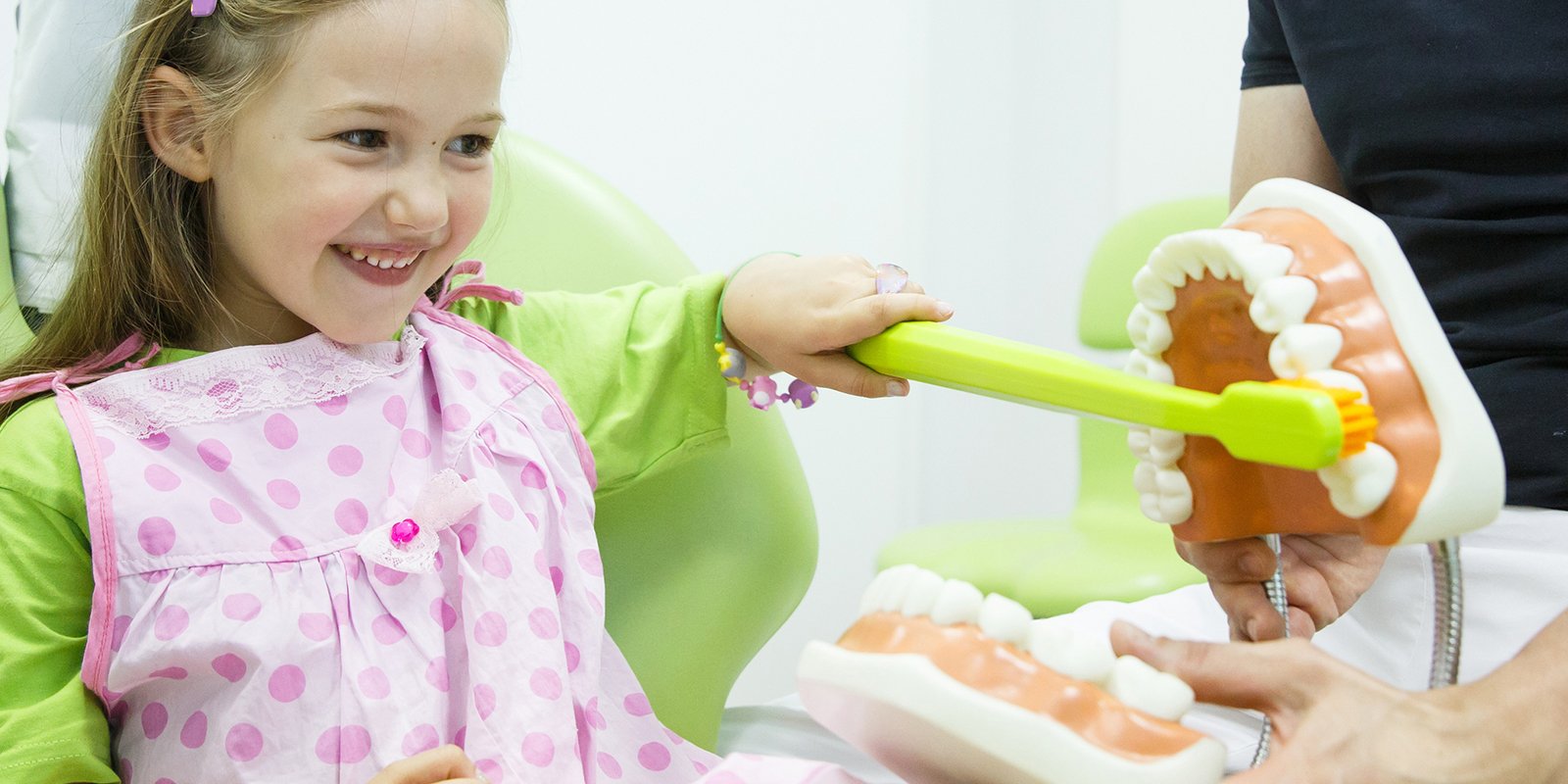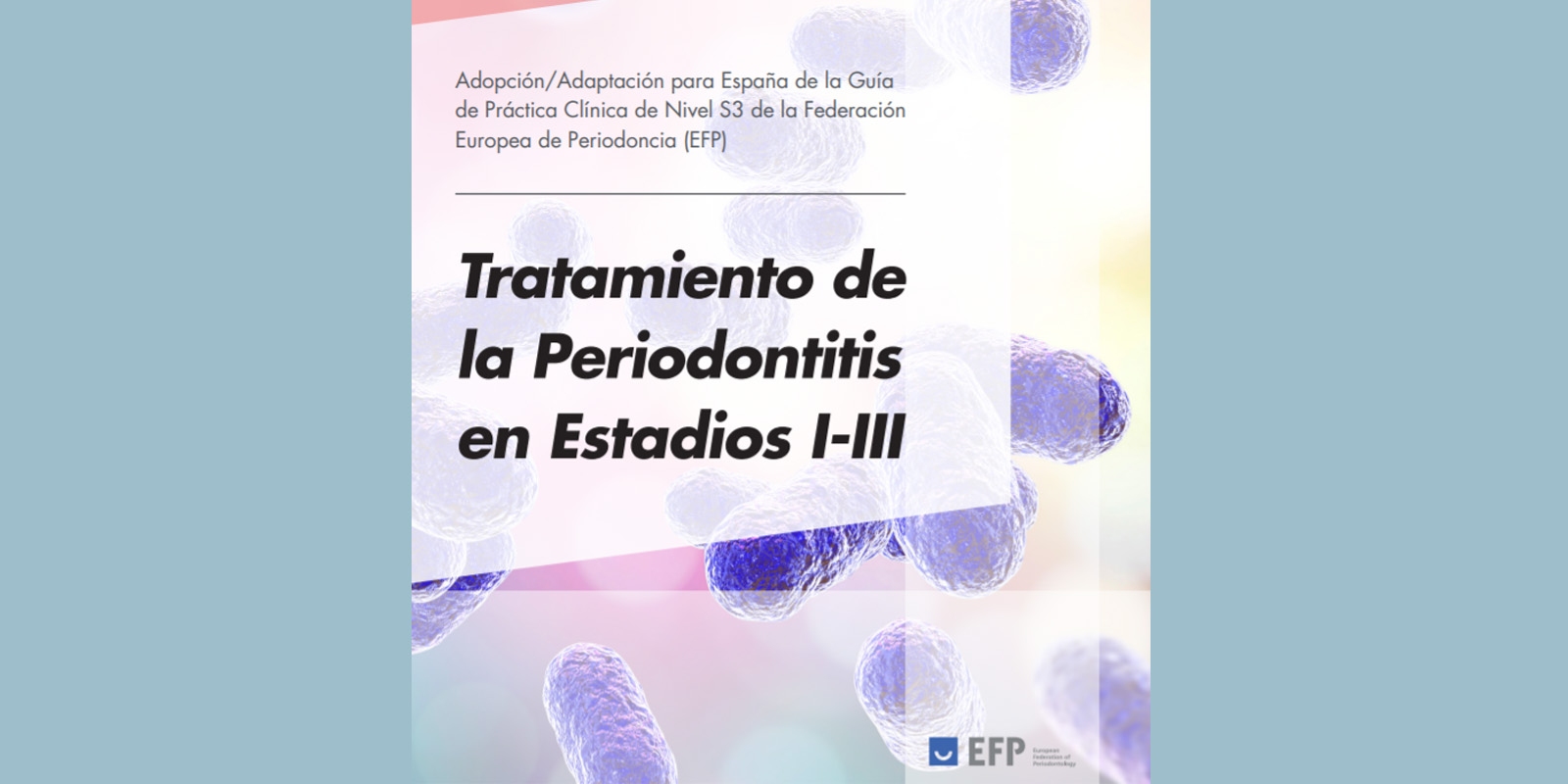DENTAID EXPERTISE
News for dentistry professionals
COMPREHENSIVE DENTAL HYGIENE IN PAEDIATRIC DENTISTRY: WHERE ARE WE?
27 Aug 2018

Dr. Patricia Solano, Master of Periodontics and Implants of the Complutense University of Madrid and a lecturer at the University of Seville, addresses the basic aspects of comprehensive dental hygiene in childhood, highlighting the need for prevention and oral healthcare.
COMPREHENSIVE DENTAL HYGIENE
Comprehensive dental hygiene, as defined by Dr. Patricia Solano, “includes those habits in which brushing technique and frequency, along with the supplements used (toothpastes and mouthwashes), have an outstanding role, without leaving aside the critical part played by diet.”
Just as there is a wide range of tools available to adults assisting the full removal of bacterial plaque where conventional toothbrushes cannot reach, dental laboratories have also begun to offer more and more dental hygiene complements for children. One example Dr. Solano points out is “DENTAID placing a range of products designed for the young at our disposal, adapted to each age in order to meet their specific needs.”
ENSURING SUCCESS
Certain circumstances which are common among children, such as orthodontic treatment, may hinder proper elimination of dental plaque, thus jeopardising their oral health and favouring the onset of tooth decay. In addition Dr. Solano explains that “it is necessary to take on board that dental hygiene is our main weapon and the fundamental basis for success in periodontal and other dental treatments.”
Comprehensive dental hygiene must thus be considered a key element and should be established as a priority objective in children’s dental treatment. “Both hygienists and other professionals who make up the dental team should receive training and information on the importance of dental hygiene, prevention and reinforcement of the child’s motivation, as well as on their involvement in overall health.”
The training of dental hygiene professionals is of particular importance. Dr. Solano places great emphasis on “instructing our hygienists in this area, which has considerable general implications.” This, in her opinion, “will help the team of specialists to carry out their work without the need to interrupt treatment, thus reducing the inherent risk, also allowing greater agility in our work.”
And the fact is that the role played by the dental hygienist, for both adults and children, is crucial in achieving the objectives of oral health. “We know that any treatment we perform, from a simple filling to an orthodontic or restorative treatment, may not offer the expected result if we do not work under proper conditions of gingival health, which implies absence of bacterial plaque, inflammation and bleeding,” Dr. Patricia Solano acknowledges.
PRACTICAL TIPS FOR CHILDREN
It is especially important to instruct parents and children on diet, avoiding excess sugar, not allowing eating in bed and insisting on brushing before going to bed.
Parents should be made aware of the need to teach their children to brush their teeth and gums from a very early age, making it second nature and getting them to make it a habit, fostering future good practice in oral hygiene. “This is advisable from six months of age, from the eruption of the first primary teeth,” says Dr. Solano, who adds that “toothbrushing in young children is effective only when performed by an adult, which makes them responsible for their children’s oral health until they acquire sufficient motor skills to do it alone, at around 7-10 years of age; from that moment on, it is important to supervise brushing every evening through to adolescence.”
In the same way, it is necessary that early healthy life habits are instilled: weaning them from their pacifier at the age of one, checking possible bad habits (such as thumb sucking), going to the dentist in case of dental trauma or perform an emergency a first visit to the dentist when the child reaches one year of age.
From age six—when the first molars and the first permanent teeth erupt—to full permanent dentition at approximately 12 years of age, comes a crucial stage in which dental hygiene should be reinforced and care should be taken feeding, since problems with more or less severe malpositioning of teeth can begin, along with decay and other oral disorders.
At this stage, it is essential they brush their teeth twice a day with fluoride toothpaste, as well as using dental floss and mouthwash. It is also advisable to protect the teeth with fluoride varnishes and/or sealants in those minors with greater risk of decay, and to avoid carbonated drinks, excess sugar and snacking between meals, without forgetting to visit the dentist at least once a year.
ROOM FOR IMPROVEMENT
Regarding periodontal disease, there seems to be evident improvement in gum health in adolescents while periodontal health in adults remains stable. Regarding the prevalence of gum disease, youths show favourable evolution, showing a trend towards reduction in the prevalence of gingivitis and tartar.
The latest figures for oral health of the 12-year-old cohort, showing the evolution of periodontal disease in Spain over 32 years, indicate growth in percentage of healthy young individuals going from 17% in 1983 to 33% in 1993—twofold in one decade—and reaching 55% in 2000.
The cohort of 15-year-old teens showed a levelling off in the prevalence of tartar since 2000, at close to 28%. Regarding the presence of gingivitis, there has been a slight improvement, since the percentage of healthy individuals has gone from 34.5% in 2005 to 46.0% in 2015.
According to the latest data published by the Oral Health Survey in Spain(1) and compared to the data collected previously in 2010, there has been an increase in preventive treatment (use of fissure sealants) in children's groups, low levels of fluorosis are maintained, and rates of restoration have increased in all population cohorts—except in older adults—indicating improved oral health over the last five years(2).
Compared with some countries in northern Europe, says Dr. Solano, “the decay and restoration index is noticeably higher, although the indicators of quality of life associated with oral health remain stable.”
Common problems
The main dental problems in the Spanish child population are decay and gingivitis. Decay affects approximately 32% of children under the age of five in Spain, a figure that rises to 40% in those under 15 and increases to 95% in adults over 30 years. Gingival inflammation is also common: one in two children under 15 in Spain has gingivitis or tartar, which can trigger periodontal health problems.
During childhood, the latest published figures indicate that the overall average of decayed teeth per child is 1, rising to 3.5 teeth with decay in youths with periodontal disease. Additionally, 18% of children under five need complex dental therapy and only 2 out of 10 temporary teeth receive dental treatment. Faced with this situation, as Dr. Patricia Solano suggests, “regular check-ups by a paediatric dentist are fundamental.”
Bibliography
- Bravo Perez M. et al. Encuesta de Salud Oral en España–Oral Health Survey in Spain 2015. Rcoe 2016; 21 (Supl. 1): 8-48.
- DMF Index: Used for permanent dentition, this is the result of the number of decayed(D), missing(M) and filled(F) teeth, divided by the total number of individuals. Bratthall D. Introducing the significant caries index together with a proposal for a new global oral health goal for 12-year-olds. Int Dent J 2000; 50: 378-384.
RELATED ARTICLES

17 Feb 2022
EuroPerio Series: professional discussions and scientific exchange
To keep the global perio community up to date with the latest research findings as well as give a taster of what is to come at EuroPerio10, the…

21 Jan 2022
Xerostomia in COVID-19 positive patients: clinical considerations
Severe Acute Respiratory Syndrome Coronavirus 2 (SARS-CoV-2) the cause of the pandemic known as COVID-19, affects different organs and systems (lungs,…

20 Jan 2022
A guide adapted to Spain to optimise the approach to periodontitis
There are currently numerous clinical practice guidelines to direct the treatment of many systemic diseases (such as diabetes, depression,…
Sign up for the DENTAID Expertise newsletter
Sign up for the newsletter